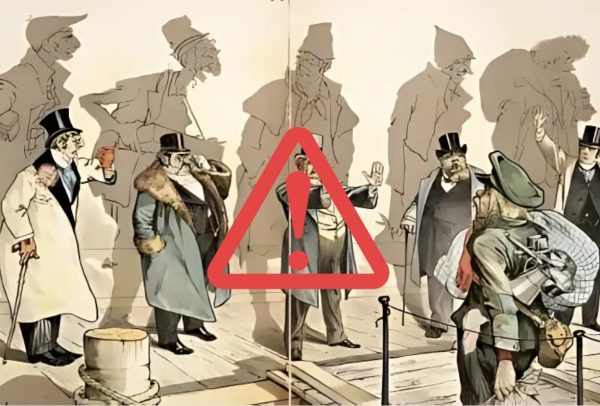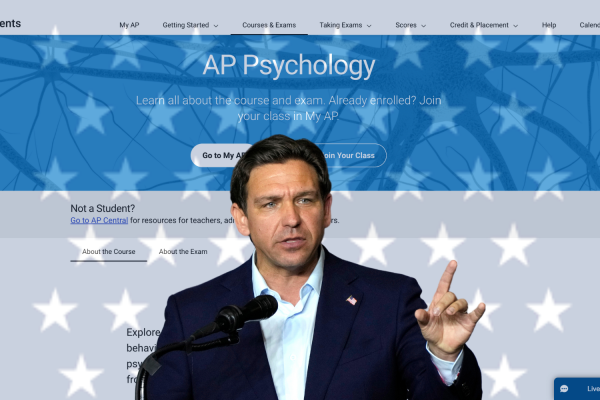Gasparilla may be over, but the temptation to drink will always be there
For the average Tampa resident, January 27 was the day to unleash your inner pirate, and a classic Gasparilla pirate would be incomplete without two necessities: beads and booze. This local holiday is known for having Bayshore Boulevard cluttered with drunken parade attendees fighting for the plastic necklaces thrown by the various floats. It is apparent how this could be seen as a problem for families wanting to have a nice day at the parade.
The Tampa Police Department started cracking down on the drinking problem as of 2010 and visited Academy for a presentation on Gasparilla safety. However, did any of this actually help with the inevitable teenage drinking? The statistics from the presentation say that this problem has, in fact, improved. Drunken conduct in general has also fallen as the years have progressed, for there have been fewer arrests since the start of the Zero Tolerance policy. This may seem like clean and neat statistics from the TPD, but the only drawback that Academy students had was that they knew the information being presented was not one hundred percent straightforward.
Comments one student, “Although I think that the information presented [in the presentation] is important, I think that the statistics are manipulated. I know of someone who was arrested for underage drinking at Gasparilla, so to say that Tampa teens don’t get arrested for underage drinking is false.”
Therefore, when the police officer stated that since 2010 zero students were arrested for underage drinking, it did not resonate well with some students. The presentation had very good points that students were able to take away, but the statistics given clearly opposed their prior knowledge and decreased the legitimacy of the presentation.
Regardless of the presentation, teenagers will be teenagers. Underage drinking is not only prevalent during a normal weekend, but it was obvious to see throughout the parade route and at any number of the multiple high school Gasparilla after-parties throughout Tampa. Through the presentation, students became aware of the Zero-Tolerance Policy, but it only made one anonymous student become more cunning around the law.
“Honestly, the presentation only taught me what NOT to do. It helped me plan how to get away with everything. They said no open containers so that translated to, ‘If you are going to get drunk, pregame.’ Which is exactly what I did.” This definitely did not only apply to one student, but to many throughout the city.
However, it is just not peer pressure urging this trend. Older siblings and sometimes parents ensure and promote safe drinking instead of the simple and legal “no drinking” rule. This combination has led to 39% of teenagers becoming involved in underage drinking, according to the CDC.
Underage drinking is notorious for causing physical problems, as another anonymous student learned the morning after Gasparilla. “I woke up the next day with the worst headache ever. I swore I would never drink again, but who really knows.”
Almost every student is aware of the effects alcohol can have, either from experience or the media. So why do students start and continue? The US Department of Health and Human Services tried to answer this question. Risk-taking is a primary reason for teenage drinking because students want to feel a thrill. The expectations that alcohol holds as an exciting drink lure teenagers into its consumption. Another reason for teenage drinking is that the brain chemistry of teenagers is different than that of adults. Teens do not feel the adverse effects of alcohol as often, leading to a continuation of alcohol consumption. The Department of Health and Human Services believes that “adolescents appear to be particularly sensitive to the positive effects of drinking, such as feeling more at ease in social situations, and young people may drink more than adults because of these positive social experiences.” This factor of teenage brain chemistry could show why the CDC reports a higher chance of alcohol abuse as an adult if consumption starts before the age of twenty-one.
Underage drinking is a fact of life that students of any age will never avoid. It happens here in high school and will occur in college too. Gasparilla may be over, but the temptation to drink will always be there. It is imperative to remember the problems that arise from underage drinking and to be conscientious of your future by being safe. It is better to not drink at all than to risk your potential for a beer.

Sam Vargas, a major contributor to the Golden Veins section of Achona as a student in Creative Writing in Fall 2012, joined the Honors Journalism Class...







